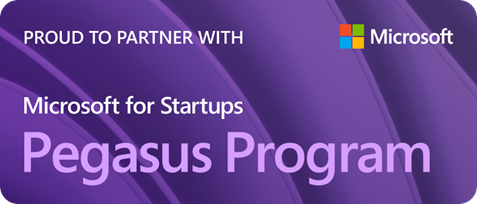Why CISOs Should Be Your CRO's New Best Friend (Spoiler: Security Sells!)
A CISO’s role has evolved far beyond just protecting the organization from external threats—it now plays a crucial part in enabling the business to grow and succeed. A CISO recently said, “A CISO’s job is to make it as easy as possible for your company’s customers to do business with you,” highlighting how security today is directly tied to customer trust, operational efficiency, and revenue growth.

At Start Left® Security, this alignment between security and business outcomes is at the heart of our platform, and we’re empowering CISOs to play a pivotal role in driving customer confidence and organizational success.
The CISO & CRO Partnership: Driving Revenue Through Security
Traditionally, the roles of the Chief Information Security Officer (CISO) and the Chief Revenue Officer (CRO) were siloed, with CISOs focused on risk management and CROs driving sales. However, in today's market, security is a key differentiator that directly impacts customer acquisition and retention. By working together, the CISO and CRO can ensure that security becomes an enabler for faster, smoother business transactions rather than a bottleneck.
SOC 2 Is Not Enough: The Need for Continuous Security Visibility
Let's be honest: SOC 2 compliance, while a widely recognized standard, is simply not enough to ensure a company’s, specifically software or SaaS vendors, security posture in today’s fast-moving digital landscape. It’s a "loosey-goosey" framework in many ways, relying on periodic, snapshot assessments that say, "We're good today!" but fail to provide ongoing assurance that systems remain secure over time. We’ve seen in major incidents like SolarWinds that even companies deemed compliant can still suffer devastating breaches.
Compliance is not equivalent to security—it’s just a baseline.
What’s becoming clear is that the industry is hitting an inflection point. Businesses are realizing that self-attested compliance checkboxes won’t protect them. CISOs and security leaders are shifting focus to continuous security performance visibility—demanding transparency not just from internal teams but from every vendor they engage with. The old model of once-a-year assessments is being replaced by real-time insights, proactive threat detection, and constant security monitoring.
Cyber insurers, in particular, should be stepping up, to drive this change by requiring more rigorous, continuous security metrics to protect themselves from costly claims. Vendors can no longer hide behind SOC 2 reports; instead, they need to demonstrate real, ongoing security program performance. Platforms like Start Left® Security are leading the charge, providing companies with continuous Application Security Posture Management (ASPM) and Cloud Security Posture Management (CSPM). With these tools, vendors can validate their security in real time, ensuring not just compliance, but actual, resilient security that meets the evolving demands of today’s business world.
Simply put: SOC 2 might tick the compliance box, but continuous security visibility will keep your business—and your customers—truly safe.
Here’s how Start Left® Security enables this partnership:
1. Security as a Competitive Advantage
Customers want to know that the products they are buying are secure by design. They expect security to be part of the product offering, not an afterthought. The Start Left® platform ensures that security is embedded from the start of product development, offering transparent security metrics through Program Performance Scoring. This scoring provides concrete data to validate that the organization's security program is effective, building trust with customers and making it easier for the CRO to close deals.
2. Reducing Sales Bottlenecks
Security concerns often slow down sales cycles, particularly during the procurement and due diligence processes. With Start Left®’s continuous security posture monitoring and real-time risk evaluation, CISOs can provide clear, auditable security data that answers customer security questionnaires faster and with more confidence. This gives the sales team a competitive edge, reducing the friction between security reviews and closing deals.
3. Program Performance Scoring as a Validation Tool
One of the most powerful features of Start Left® is its Program Performance Scoring, which enables CISOs to demonstrate real, measurable success of their security efforts. This is not just a compliance box-checking exercise but a detailed analysis of whether security vulnerabilities are being identified, addressed, and prioritized effectively. The performance score gives the CISO a tangible way to show the CRO and customers that the security program is not only in place but also performing well. It builds trust and validation that security is an integral part of the product lifecycle, ensuring smooth business operations.
Performance Scoring: A Key to Collaboration and Trust
Start Left®’s performance scoring offers clear, objective data that helps bridge the gap between security and revenue. With metrics such as:
- Vulnerability management efficiency: Tracking how quickly vulnerabilities are identified and mitigated.
- Risk prioritization: Ensuring that high-risk issues affecting customer data or product integrity are resolved first.
- Continuous monitoring and improvement: Offering an ongoing view of the organization’s security posture rather than a one-time audit.
This data empowers the CISO to work hand-in-hand with the CRO, showing customers that security is at the core of the organization’s operations and not a last-minute addition. The CISO can confidently communicate that the company is not just compliant, but proactively secure, making it easier for customers to trust doing business with them.
Proactive Security: Building Customer Trust and Driving Revenue
By embedding security early into product development and continuously monitoring the security posture throughout the product lifecycle, Start Left® Security makes it easier for businesses to prove their security posture to customers. This level of proactive, transparent security is increasingly becoming a customer expectation and can be a powerful tool for the sales team to leverage.
Inside-Out Risk Scoring: A Critical Addition to External Validation
While platforms like BitSight, SecurityScorecard, Black Kite, and RiskRecon provide valuable outside-in risk assessments, these tools only scratch the surface of an organization’s overall security posture. What they lack is the internal visibility needed to fully understand how security issues are being managed in real time. This is where Start Left®’s inside-out risk scoring adds value.
Start Left Security enhances the external validation process by offering a detailed look at internal metrics, such as how effectively vulnerabilities are identified, prioritized, and remediated across your product teams. Our risk scoring is not based on surface-level indicators but is grounded in actual, internal security operations—giving leadership, customers, and partners confidence that security is actively managed, not just checked off for compliance. By combining outside-in and inside-out views, businesses can present a more holistic, transparent security profile that accelerates sales and builds customer trust.
This approach positions security not just as a compliance requirement, but as a strategic advantage that both mitigates risk and facilitates smoother sales processes.
Conclusion
CISOs can now play a crucial role in driving revenue by collaborating closely with the CRO, showing customers that the organization’s security efforts are validated, measured, and continually improved—not only ensuring business continuity but also facilitating smoother, faster sales cycles.
The role of the CISO has never been more important in building customer trust and enabling revenue growth. With Start Left® Security, CISOs can not only protect the business but actively contribute to faster sales, better customer experiences, and greater confidence in the products and services offered. By working with the CRO and using performance scoring as validation, CISOs are now positioned to drive growth and security hand in hand.
SHARE!
More Resources















